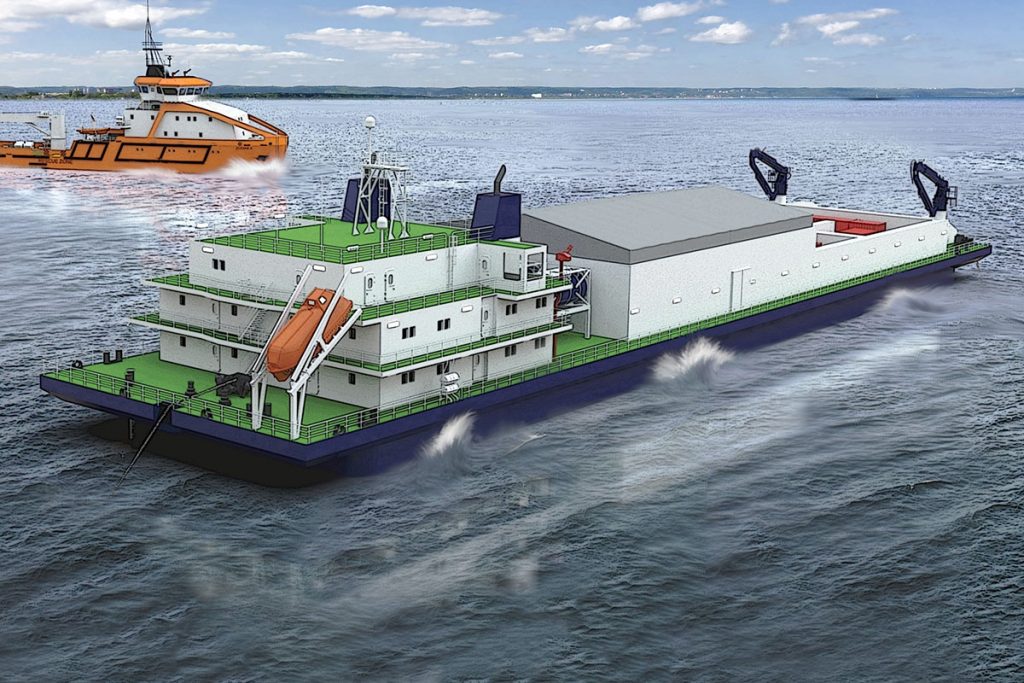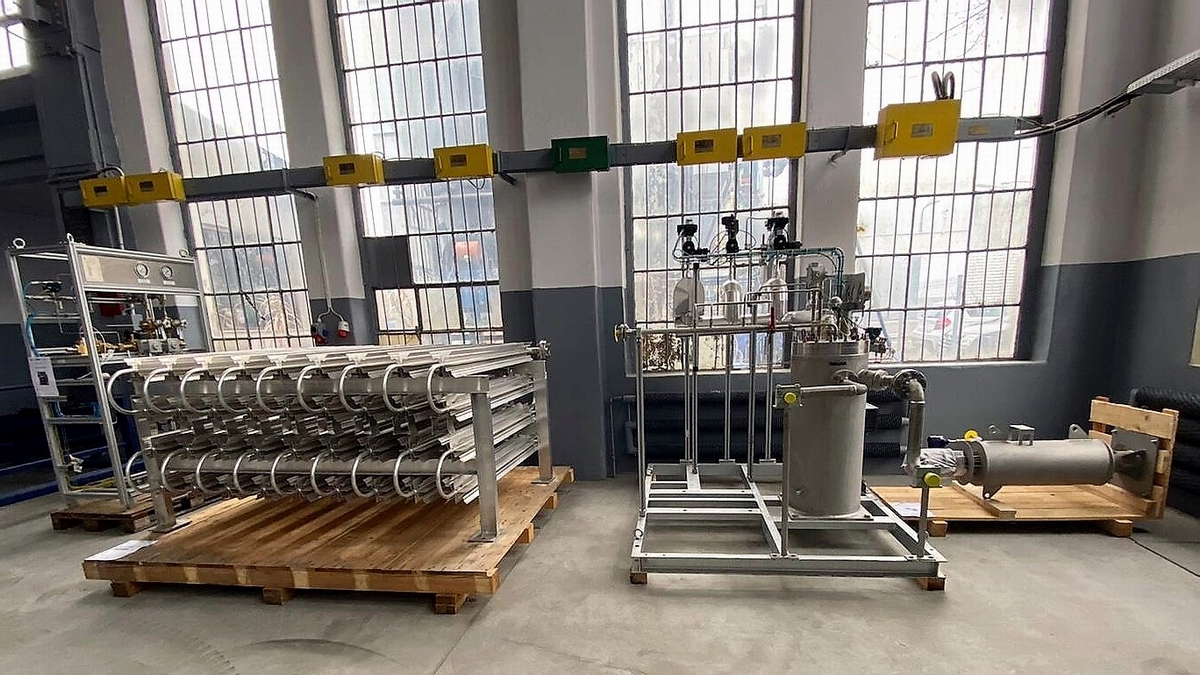Removal of hazardous substances from the bottom of the Baltic Sea – solution of Remontowa Holding
remontow Remontowa Shipbuilding and RMDC, a ship design and consulting company, also part of the Remontowa Holding group, together with partners from Poland and Sweden, present a comprehensive concept for solving the problem of cleaning the Baltic seabed, also from hazardous substances that are remnants of World War II. The proposal includes both a specialist vessel and a method for cleaning the seabed.
Clearing the Baltic Sea of hazardous remnants of both World Wars, especially chemical weapons and munitions stored on the seabed, is an increasingly urgent task for the maritime economy and coastal safety of the Polish part of the Baltic. Progressive corrosion of the munitions will result in more and more frequent leakage of hazardous material directly into the sea waters. In turn, currents on the Baltic will direct this dangerous material directly onto Polish beaches.
The actions and international programmes undertaken so far allow only partial identification of the locations of hazardous materials and their condition. However, we are far from being able to fully identify the situation on the Baltic seabed and to map all the locations of this danger in Polish waters. This requires a new approach, allowing us to act more quickly, more extensively and more effectively, as time is not a supporting factor. Every year means deterioration in the condition of the bunkers and containers in which chemical weapons are stored. Until now, there has been no comprehensive concept for the disposal of this lurking danger.
Bearing in mind the above threats, Remontowa Shipbuilding SA, together with Remontowa Marine Design & Consulting Sp. z o.o., Ibcol Sp. z o.o. and Dynasafe Demil Systems AB of Sweden, undertook activities to develop a technical concept for a hazardous munitions disposal unit and the process of neutralisation of excavated munitions and explosives.
The cooperation of an experienced Polish shipyard with a company specialising in the construction of classic and chemical ammunition disposal lines operating on the international market brings a solution to the indicated problem. In this experienced team we managed to create functional assumptions for a sea barge, allowing for complex and, what is most important, safe disposal of hazardous materials from the bottom of the Baltic Sea, both classical ammunition and chemical weapons.
The concept developed jointly by the above entities under the management of Remontowa Shipbuilding, although focused on the most important and most difficult element, i.e. the unit for safe disposal of munitions and chemical weapons at sea, covers the entire range of activities related to the disposal process.
The basic assumption of the concept creators is the full implementation of the hazardous munitions disposal process at sea. Disposal of hazardous materials on land not only creates an increased risk associated with handling and transporting hazardous agents through populated areas, but would also provide a wide area for public protest. Disposal at sea therefore ensures that the route of a hazardous substance from its receipt to the disposal line is shortened and guarantees the highest level of safety for the Polish coast.
The concept, due to its complexity, assumes the need for further improvement of the existing identification and surveillance of hazardous materials storage places on the seabed, which requires strengthening of maritime administration, Navy and other institutions. Taking the above into account, it seems advisable to develop the ship’s capabilities for the observation and surveillance of the seabed, including the detection of hazardous materials in order to catalogue them accurately and then undertake their disposal.
The mere initial loading of munitions into the mining containers while still underwater and preparation of the underwater depot for removal are tasks that seem possible to perform with Polish resources, both of groups of divers – miners of the Polish Navy and of entities providing specialist diving services. This requires, however, an increase in potential, through retrofitting of specialised robots and heavy suits, eliminating the diver’s contact with the external environment and hazardous substances.
The final and key element of the whole process is a modular disposal line for ammunition and chemical weapons, which in the presented concept is mounted on a double-hulled sea barge with adjustable draught. This design ensures a very high level of stability of the vessel, while at the same time providing sufficient space for the disposal line and the necessary solutions, which are indispensable for the safety of the disposal process. Dynasafe Demil Systems AB’s modular disposal line, mounted on a double-hull unit designed by Remontowa Marine Design & Consulting Sp. z o.o., is a solution confirmed by numerous long-term tests and in practical operation. Reaching for a proven installation seems to be a necessary action to ensure the highest safety of the entire operation.
The number of entities with ammunition and chemical weapons (WMD) disposal line technology is very limited in the world. The solution used in the presented concept was applied in countries such as the United States, France, Germany, Japan, Italy and China. References, proven technology and, consequently, the safety of installations are the key factors in this case, eliminating untested solutions. In this segment of technology, there is no room for any mistakes or faults that need to be corrected, as any fault can lead to a threat of weapons of mass destruction for hundreds or thousands of people.
A key component of the installation is the static armoured combustion chamber SDC, operating at 550°C. The high temperature safely burns hazardous material from both conventional and chemical weapons and munitions. The SDC can withstand detonation, although in most cases the munitions will not detonate, only burn out. Safety of operations is ensured by several levels of safety solutions, including a gas purification system to ensure compliance with current environmental standards, not only of the European Union, but also of Japan, the United States and Singapore. The global references of customers for Dynasafe solutions confirm that this is a safe solution, proven in operation by many institutional users.
The concept developed by a group of specialists led by Remontowa Shipbuilding Shipyard assumes the maximum possible participation of domestic industry. The ability to design and build vessels to survey the seabed and take on hazardous materials is within the competence of the Polish shipbuilding industry, as is the ability to build a vessel – a sea barge with a disposal installation. Solutions for offshore hazardous material disposal units may also become an attractive subject for export of technologies from the domestic shipbuilding industry. The crews of these units, once trained in the use of the ammunition and chemical weapons disposal system, could also be Polish. Similarly, the underwater part of taking hazardous materials for disposal can be done by Polish underwater service providers.
Remontowa Shipbuilding, acting together with its partners, demonstrates its readiness to participate in a difficult but seemingly necessary programme to remove the chemical threat from the Baltic Sea, which poses a direct threat to Polish waters, fisheries and coastal tourism, and indirectly to the population living along its 440 km coastline.
The concept presented to the government now requires functional refinement on the part of the contracting authority and the contractor, as well as a decision to implement the programme. We also welcome the action taken by both the government and Polish parliamentarians in the international arena to ensure that the European Union allocates financial resources to rid Europe’s seas of the burning problem.
Undertaking the programme by the Polish government, with co-financing from European funds, would make such an expanded potential an attractive solution to both national needs and those of other countries in the Baltic region.
The design of the unit – a sea barge with a conventional and chemical ammunition disposal line – may find export application, also for the needs of other basins. There are similar needs in Italy, France, Belgium and the Black Sea states, where chemical weapons and ammunition have been dumped, threatening not only the marine ecosystem, but above all the coastal residents.
rel. PortalMorski.pl




